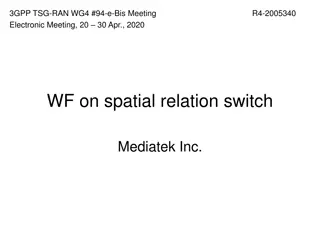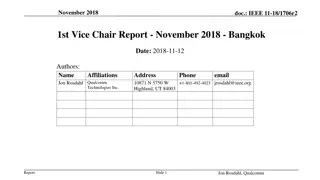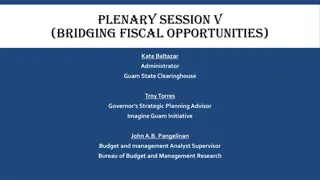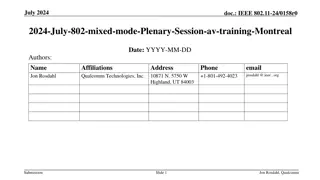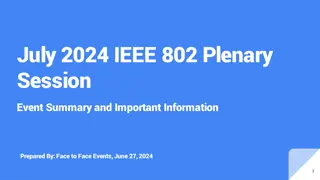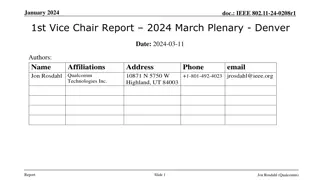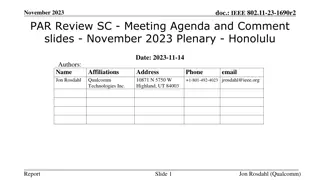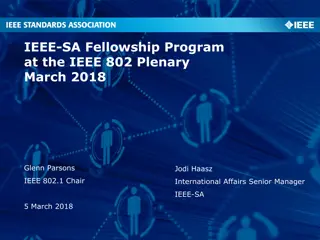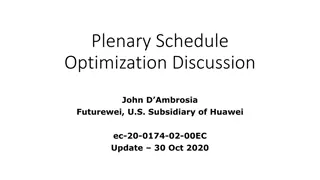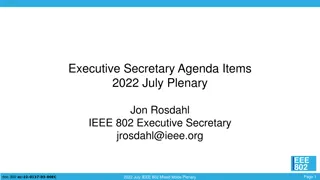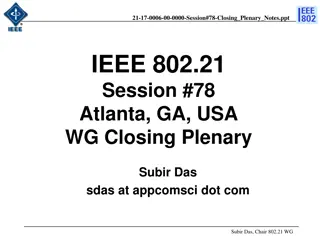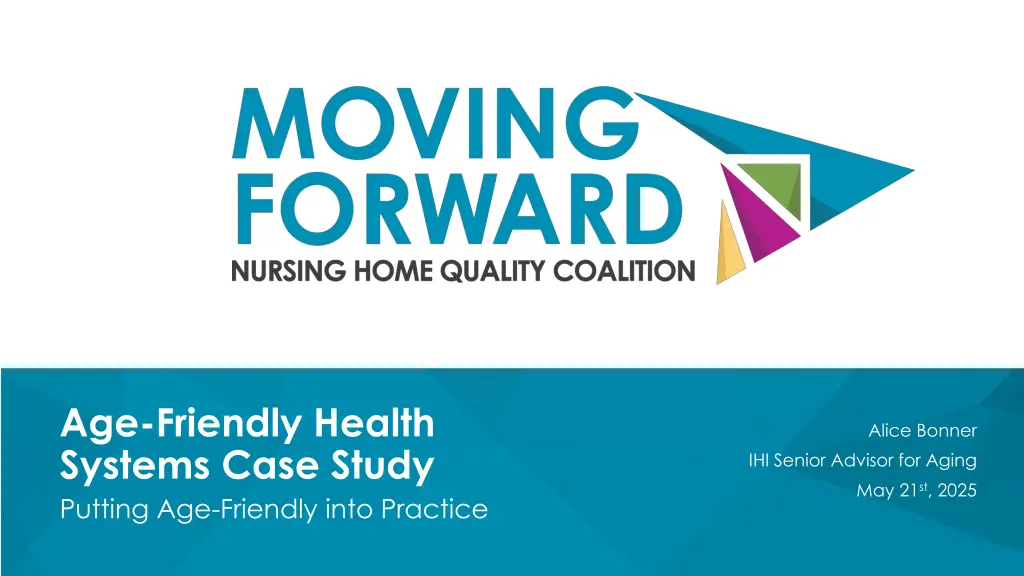
Putting Age-Friendly Care Plan for Mr. B
Dr. Moore and Mr. B collaborate on an age-friendly care plan for a 92-year-old gentleman living in a rural area, focusing on mobility, social engagement, and health management. The plan includes medication continuation, physical therapy referral, community re-engagement strategies, advance care planning, and lifestyle adjustments.
Download Presentation

Please find below an Image/Link to download the presentation.
The content on the website is provided AS IS for your information and personal use only. It may not be sold, licensed, or shared on other websites without obtaining consent from the author. If you encounter any issues during the download, it is possible that the publisher has removed the file from their server.
You are allowed to download the files provided on this website for personal or commercial use, subject to the condition that they are used lawfully. All files are the property of their respective owners.
The content on the website is provided AS IS for your information and personal use only. It may not be sold, licensed, or shared on other websites without obtaining consent from the author.
E N D
Presentation Transcript
Age-Friendly Health Systems Case Study Putting Age-Friendly into Practice Alice Bonner IHI Senior Advisor for Aging May 21st, 2025
Background Mr. B is a 92-year-old gentleman who lives with his nephew in a small, isolated house in a low-income rural area. He was never married and has no children. Mr. B used to enjoy going out for a beer with his buddies and playing cards but he doesn t do that anymore because most of his friends have died or moved away. He still tries to be active and enjoys walking about two miles to the local convenience store to get the paper every day. Mr. B s health conditions include an old knee injury with mild chronic pain, arthritis, COPD (was a smoker for many years), and mild cognitive impairment (MCI). He takes acetaminophen for knee pain, two inhalers for his COPD, and rivastigmine for his MCI. 2
Ambulatory Care Visit Mr. B has a new primary care physician, Dr. Moore, as his previous physician moved away. Dr. Mooreis trying to get to know Mr. B better with each visit. Mr. B walks slowly and with a slight limp. He speaks softly but clearly. He seems attentive and engaged. Mr. B s nephew drives him to the clinic but stays in the waiting room during the visit. He provides his cell phone number to Dr. Moore, with Mr. B s consent, so that Dr. Moore can get in touch with him if needed (Mr. B has approved that plan to involve his nephew if needed). Related to What Matters What Matters, Dr. Moore asks Mr. B about his previous work/career and his hobbies and interests. 3
Is Mr. B on any high-risk medications? Dr. Moore does a brief cognitive assessment and determines that Mr. B s cognitive status (Mentation Mentation) has not changed significantly since his last documented assessment. Other than occasional, mild memory issues, he seems to understand his current health status and his overall living situation. His nephew confirms that assessment in a telephone call with Dr. Moore after the visit. Dr. Moore notes that Mr. B walks slowly and that his balance is generally ok but occasionally he seems slightly unsteady. He takes his time going from sitting to standing and turning while walking. Dr. Moore notices that Mr. B s shoes are worn out (soles are flat and upper portions are threadbare). 4
What Risks to Mobility can you Identify? 5
Dr. Moore and Mr. B design and develop Dr. Moore and Mr. B design and develop this care plan together: this care plan together: Continue same medications. Mr. B will let Dr. Moore know if the knee pain persists or gets worse. PT referral for increasing strength and balance. Brainstorm about ways that Mr. B could re-engage with remaining friends/neighbors in his rural community. Suggest Senior Center may offer options. Plan to address advance care planning with Mr. B and his nephew on the next visit. Avoid alcohol. Purchase new shoes with rubber soles and ankle support. 6
What Happens Next What Happens Next Mr. B returns home and continues with his usual routines. About two months later, he is going down the outside steps, loses his balance and falls. He has a sharp pain in his hip and is unable to stand. His nephew calls 911 and the ambulance takes him to the emergency room. Xray reveals a hip fracture. Mr. B is admitted for surgery the next day. 7
Hospital Stay On post-op day #1, the orthopedic resident asks Mr. B What Matters Most What Matters Most to him right now. Mr. B says, getting rid of this pain in my leg, being able to walk again, getting back to my home. How would you respond to Mr. B? 8
Medications Medications The orthopedic resident reviews Mr. B s previous Medications Medications and calls Dr. Moore to find out more about Mr. B s case. 9
In terms of Mentation Mentation, Mr. B is at high risk for delirium with the change in/unfamiliar environment, possible dehydration, possible increased urination with IV fluids, possible lack of sleep. If you were the nurse, what interventions would you use to prevent delirium (Mentation Mentation)? 10
Mobility Mobility The day after surgery, Mr. is seen by PT for a Mobility Mobility screen and assessment. PT plans to see him twice a day while he is hospitalized to promote safe transfers, self-care, ambulation, strengthening. Some of the nursing staff are not comfortable walking with Mr. B without physical therapy being present. 11
TRANSFER TO A SKILLED NURSING FACILITY (SNF) TRANSFER TO A SKILLED NURSING FACILITY (SNF) Mr. B isn t stable enough to return home right away, but he may be able to return home in about 10-14 days. The team explains that going from the hospital to a SNF setting will promote Mr. B s goals of becoming more independent and hopefully safe enough to return to his home with his nephew. The team does have concerns that with his MCI and multiple fall risks, Mr. B s quality of life may be better in either an assisted living residence or nursing home. However, he has a limited income and may not be able to afford assisted living. He is also worried that if he sells the house, his nephew will not have a place to live. 12
Age Age- -Friendly Implementation Friendly Implementation How would you suggest that the new team in the SNF find out What Matters What Matters to Mr. B right now? Medications were added in the hospital (e.g., bowel medications, sleep medications, proton pump inhibitor). How would you evaluate whether Mr. B still needs to be on all those Medications Medications? 13
Age Age- -Friendly Implementation Friendly Implementation In terms of Mentation Mentation, how would you screen and assess Mr. B for delirium in the SNF? Mr. B sometimes becomes confused at night and tries to climb out of bed without assistance. How would you approach that issue if you were on the nursing home team? 14
Final Care Plan Updates Using the 4Ms Final Care Plan Updates Using the 4Ms Discharge Plan Discharge Plan After 21 days in SNF, the team and Mr. B determine that he is still not safe to return home to live with his nephew. After discussion with the team and family, Mr. B agrees that he will try living at the nursing home as a long-term care resident. His nephew has a new job in another state, so he does not mind that the house will be sold to spend down for Mr. B s nursing home care. 15
Final Care Plan Updates Using the 4Ms Final Care Plan Updates Using the 4Ms Discharge Plan Discharge Plan The discharge summary including how each of the 4Ms each of the 4Ms was addressed is sent to the long-term care neighborhood within the nursing home for the new care team. Documentation about the What Matters What Matters conversations in the hospital and in SNF are shared with the new team as well. Having the SNF and hospital discharge summaries with all all relevant 4Ms relevant 4Ms information will guide the new team in continuing to work with Mr. B so that he is able to achieve his health and quality of life goals. 16
Summary and Discussion Summary and Discussion The nursing home team assessed assessed each of the 4Ms in Mr. B s case and documented their approach (Act (Act On) On) to each one and for the 4Ms as a set. Information on the 4Ms was documented and shared across settings. 17
Thank you! Questions about Age-Friendly Health Systems? Please contact Alice Bonner abonner@ihi.org




